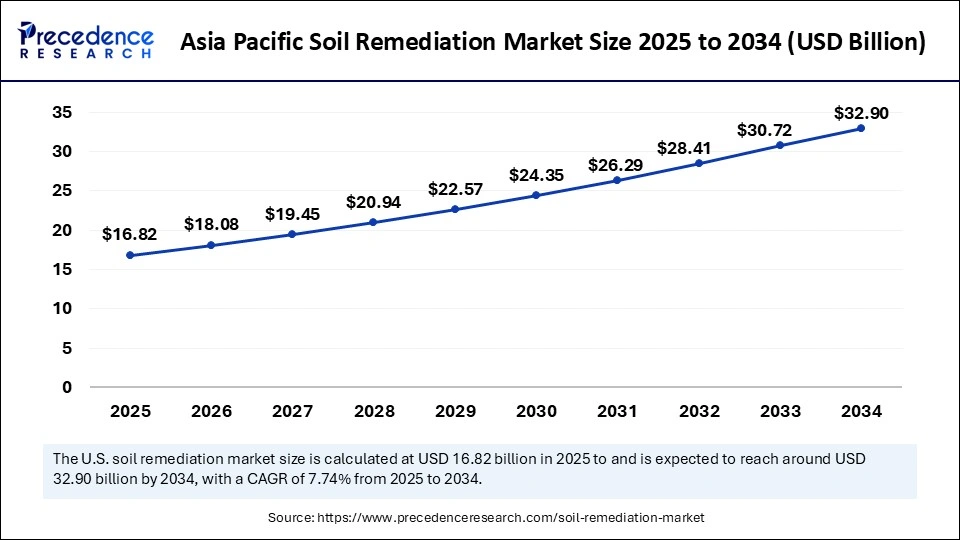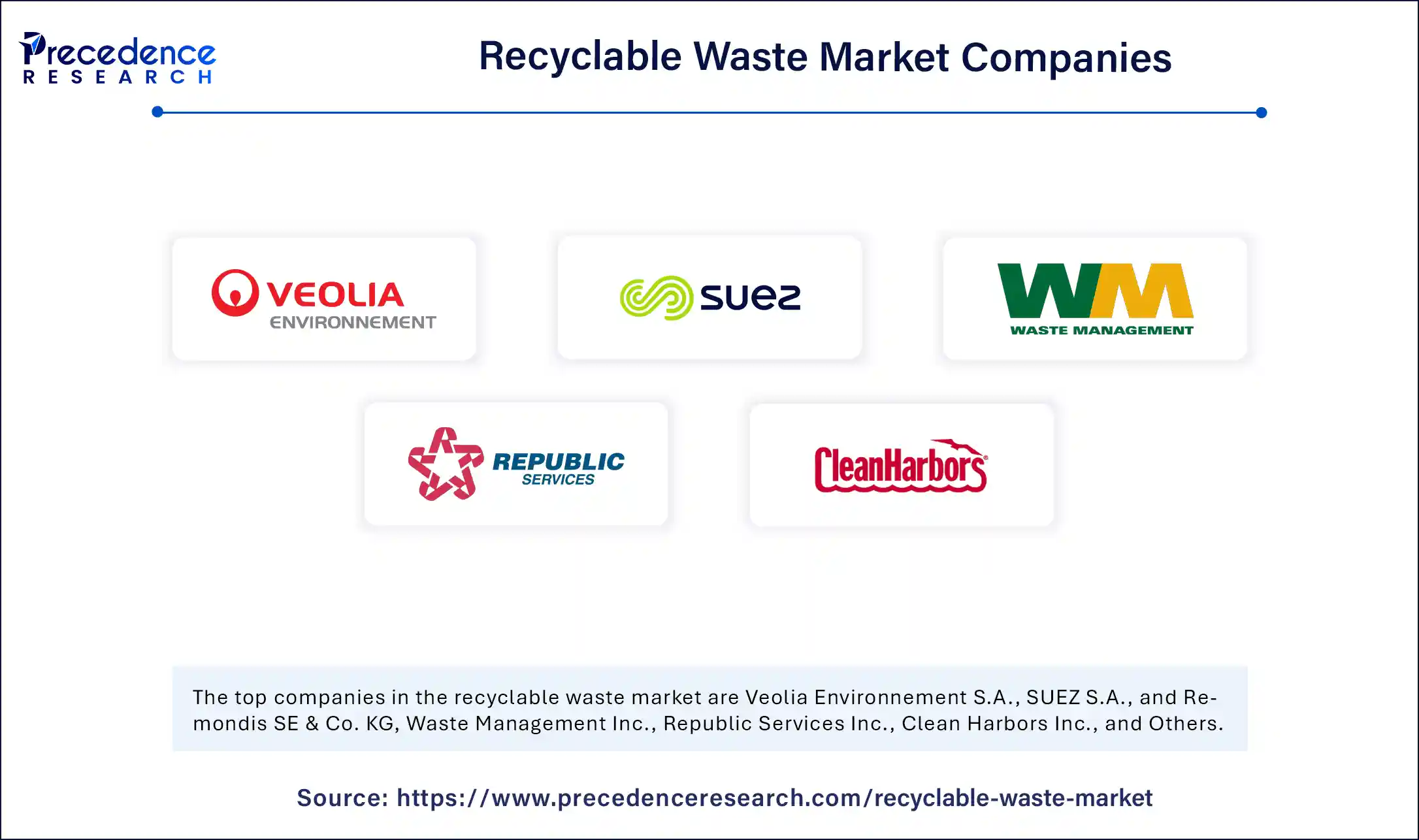The Asia Pacific soil remediation market is projected to expand significantly from USD 16.82 billion in 2025 to USD 32.90 billion by 2034, exhibiting a compound annual growth rate (CAGR) of 7.74%. Driven by rising environmental and health awareness, stringent government regulations, and the urgent need to rehabilitate contaminated land, this market is poised for transformative growth over the forecast period.

The Asia Pacific soil remediation market focuses on restoring contaminated soil to a safe and sustainable state by removing or neutralizing pollutants such as organic compounds, heavy metals, and radioactive substances. The growing industrialization, urban expansion, and infrastructural development have heightened soil contamination risks, prompting regional governments and industries to adopt remediation methods aggressively. This trend, coupled with increasing environmental consciousness and regulatory enforcement, propels the market at a strong CAGR of 7.74% between 2025 and 2034.
Asia Pacific Soil Remediation Market Quick Insights
- In 2024, the market size was valued at USD 15.66 billion, expected to grow to USD 16.82 billion in 2025.
- The market is forecast valued at approximately USD 32.90 billion by 2034, growing at a CAGR of 7.74%.
- The Asia Pacific region leads due to rapid industrialization and stringent environmental laws in countries like China, India, and Japan.
- Chemical remediation methods currently dominate the market, favored for their rapid and versatile contaminant removal.
- Bioremediation is emerging as the fastest-growing segment due to its eco-friendly and cost-effective approach.
- Major players driving innovation include technology providers and remediation firms deploying AI and precision agriculture technologies.
Asia Pacific Soil Remediation Market Revenue and Market Breakdown
| Year | Market Size (USD Billion) |
|---|---|
| 2024 | 15.66 |
| 2025 | 16.82 |
| 2034 | 32.90 |
AI’s Role in the Asia Pacific Soil Remediation Market
Artificial Intelligence (AI) is increasingly transforming soil remediation by integrating with bioremediation and precision agriculture technologies. AI-powered algorithms enhance pollution removal efficiency by enabling precise soil sampling, real-time monitoring, automated analysis, and optimized resource utilization. Tasks such as path planning, computer vision, and sensing allow for adaptive management of remediation processes, significantly improving outcomes.
Moreover, AI facilitates predictive modeling for soil conservation, enabling stakeholders to forecast ecological impacts and guide land preservation efforts with higher accuracy. This digital transformation supports sustainable development goals by reducing environmental footprints, optimizing input application, and fostering circular economy principles within agriculture and soil management.
Get this report to explore global market size, share, CAGR, and trends, featuring detailed segmental analysis and an insightful competitive landscape overview @ https://www.precedenceresearch.com/sample/6731
Asia Pacific Soil Remediation Market Growth Factors
Several factors contribute to the robust expansion of the soil remediation market in Asia Pacific: rising awareness of health and environmental risks from contaminated soil; government’s stringent regulations and cleanup mandates; increased redevelopment of brownfield and industrial sites; and rapid urbanization coupled with industrial growth. The surge in adoption of advanced remediation technologies, including chemical and biological methods, also propels market growth by enhancing cleanup efficacy and sustainability.
Emerging Opportunities and Trends: What Key Questions Are Driving the Market?
Why is chemical remediation dominating the Asia Pacific soil remediation market?
Chemical methods are preferred for their speed, versatility, and effectiveness in breaking down various contaminants. Techniques such as chemical oxidation, soil flushing, and vapor extraction are widely adopted due to their rapid pollutant stabilization capabilities, catering especially to industrial and urban contamination scenarios.
How is bioremediation shaping the future of soil remediation in Asia Pacific?
Bioremediation offers an eco-friendly, cost-effective alternative by using microorganisms to degrade pollutants naturally, reducing secondary pollution risks and supporting soil biodiversity. Advancements in genetically modified microbes and bio-augmentation are expanding bioremediation’s application scope, making it a fast-growing market segment.
What role does digital transformation play in soil remediation?
Digital tools and AI integration enable real-time data collection, enhanced monitoring, and predictive environmental modeling, leading to optimized remediation strategies that align with sustainable agricultural and environmental goals.
Regional and Segment Analysis
The Asia Pacific region, spearheaded by countries like China, India, and Japan, dominates the soil remediation market due to rapid industrialization and strict environmental regulations.
Chemical remediation leads the market segment share, while biological methods are anticipated to grow fastest. Precision agriculture technology adoption further supports soil health through reduced chemical usage and optimized resource management. The market also segments by technique, with chemical oxidation, soil flushing, and bioremediation prominent among remediation methods.
Latest Breakthroughs and Leading Companies
Recent advancements include the development of nano-enhanced soil conditioners and AI-driven soil monitoring systems. These innovations improve remediation precision and soil quality restoration. Key companies pushing these breakthroughs include environmental tech firms and remediation service providers operating regionally and globally (specific company names are often proprietary in the report but typically represent leading environmental technology and agricultural solution providers).
Asia Pacific Soil Remediation Market Companies

- Veolia Environment S.A.
- TerraTherm, Inc. (Cascade Environmental)
- SUEZ
- RSK Group (Enviros/ENHESA)
- REGENESIS
- Polyeco Group
- Jacobs Solutions Inc.
- Greensum Ecology
- Dowa Ecosystem
- Clean Harbors, Inc.
- Boskalis Environmental
- Bechtel Corporation
- AECOM
Challenges and Cost Pressures
Despite promising growth, the market faces challenges such as the high cost of advanced soil conditioners—especially nano-enhanced products—which can limit adoption by small and medium-scale farmers. Additionally, complex research and production costs for innovative remediation products create price barriers, particularly in developing economies. Managing cost pressures while scaling sustainable remediation remains a critical industry challenge.
Case Study Highlight
A recent remediation project in a heavily industrialized area of China utilized AI-integrated bioremediation techniques combined with precision agriculture sensors. This approach enabled efficient pollutant breakdown and optimized soil restoration, reducing the site’s contamination levels significantly within months while minimizing secondary environmental impacts.
Read Also: Biopharmaceutical Packaging Market
You can place an order or ask any questions. Please feel free to contact us at sales@precedenceresearch.com |+1 804 441 9344